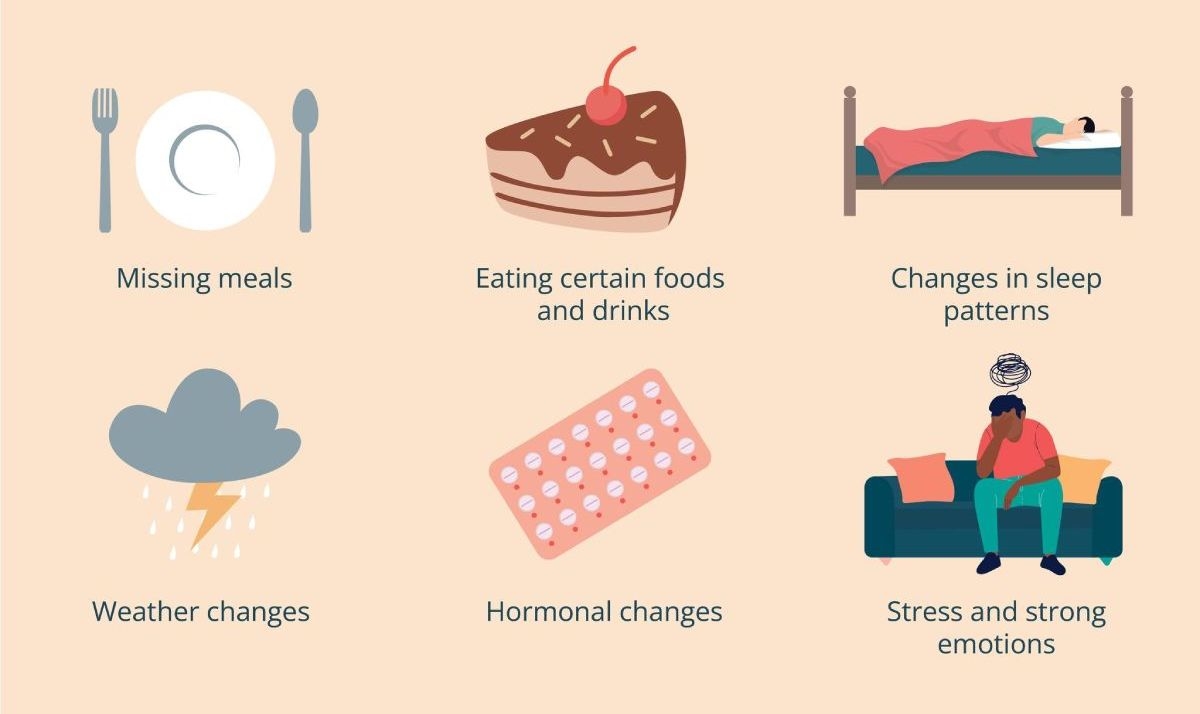Many migraine sufferers claim a connection between their migraine attacks and specific foods and beverages, although this link has yet to be scientifically confirmed. The challenge lies in the fact that food triggers vary from one migraine sufferer to another. Consequently, there are no universal dietary guidelines or guaranteed triggers for them. One effective approach to addressing this issue is through an elimination diet.
To initiate an elimination diet, start by compiling a list of foods you suspect might be triggering your migraine attacks. Reflect on the occasions when you experienced an attack and what you consumed before the episode. Delve into specifics, such as the ingredients in the meals you ate and their sources.
Once you have created your list, proceed to the next step.
The subsequent phase can be challenging, as it involves refraining from consuming anything that appears to induce a headache until a potential trigger is identified. Gradually reintroduce individual components into your diet until you can confirm a specific cause. Once triggers are confirmed, it’s essential to avoid them.
Even after pinpointing the primary trigger, it’s important to maintain the dietary restrictions. It’s not uncommon for migraine sufferers to have multiple food triggers. Confirming all potential triggers is crucial for the exclusion diet to be effective.
For many migraine sufferers, it’s not just a single type of food but rather a combination of dietary factors that contribute to their migraines. This is why some individuals may experience headaches after consuming certain foods, like guacamole, which contains other known migraine triggers, while not being affected by other foods, such as avocados.
It’s important to acknowledge that there are no guarantees that migraines will completely disappear.

Migraine Trigger Exclusion Dieting
Migraine trigger exclusion diets are dietary approaches aimed at identifying and eliminating specific foods or ingredients that may trigger migraines in some individuals. It’s important to note that not everyone with migraines will have trigger foods, and the effectiveness of exclusion diets can vary from person to person. Here are some steps you can take if you’re considering this approach:
- Keep a Migraine Diary: Before starting an exclusion diet, it’s essential to keep a detailed diary of your migraines. Note when they occur, their duration, severity, and any potential triggers you suspect, including foods and beverages. This will help you establish a baseline and identify patterns.
- Consult a Healthcare Professional: It’s crucial to consult with a healthcare professional, such as a neurologist or registered dietitian, before starting any exclusion diet. They can help you assess the appropriateness of this approach and rule out other underlying medical conditions.
- Identify Potential Trigger Foods: Common migraine trigger foods and ingredients include:
- Caffeine: Some people are sensitive to caffeine and may experience migraines when they consume too much or when they abruptly withdraw from it.
- Alcohol: Red wine, beer, and certain spirits can trigger migraines in some individuals.
- Tyramine: Found in aged cheeses, processed meats, and some fermented foods, tyramine is a known migraine trigger for some people.
- Artificial Sweeteners: Aspartame and sucralose are artificial sweeteners that may be problematic for some migraineurs.
- MSG (Monosodium Glutamate): Found in some processed and restaurant foods, MSG can be a trigger for some individuals.
- Histamine: Foods high in histamine, such as aged cheeses, smoked meats, and certain fermented foods, can trigger migraines in some people.
- Elimination Phase: With the guidance of a healthcare professional, you can start an elimination phase where you remove suspected trigger foods from your diet for a specific period, typically 2-6 weeks. During this time, carefully monitor your migraine frequency and severity.
- Reintroduction Phase: After the elimination phase, you gradually reintroduce one suspected trigger food at a time while closely monitoring your migraine symptoms. This step helps identify specific triggers.
- Maintain a Balanced Diet: It’s essential to maintain a balanced diet during this process to ensure you get all the necessary nutrients. A registered dietitian can help you plan a well-balanced diet that accommodates your specific dietary restrictions.
- Be Patient and Persistent: Identifying migraine triggers through exclusion diets can be a time-consuming process, and it may take several cycles of elimination and reintroduction to pinpoint specific triggers accurately.
- Lifestyle Factors: Keep in mind that factors other than diet, such as stress, sleep, and hormonal changes, can also trigger migraines. Addressing these factors alongside dietary changes may lead to better results.
- Personalized Approach: Everyone’s migraine triggers can be different, so what works for one person may not work for another. Personalization and patience are key in this process.
Remember that migraine management is complex, and dietary triggers are just one aspect. Medications and lifestyle adjustments may also be necessary components of your migraine management plan. Always seek guidance from healthcare professionals for the most appropriate and effective treatment for your specific situation.
Pain Medications, Pain Relief, and Pain Management